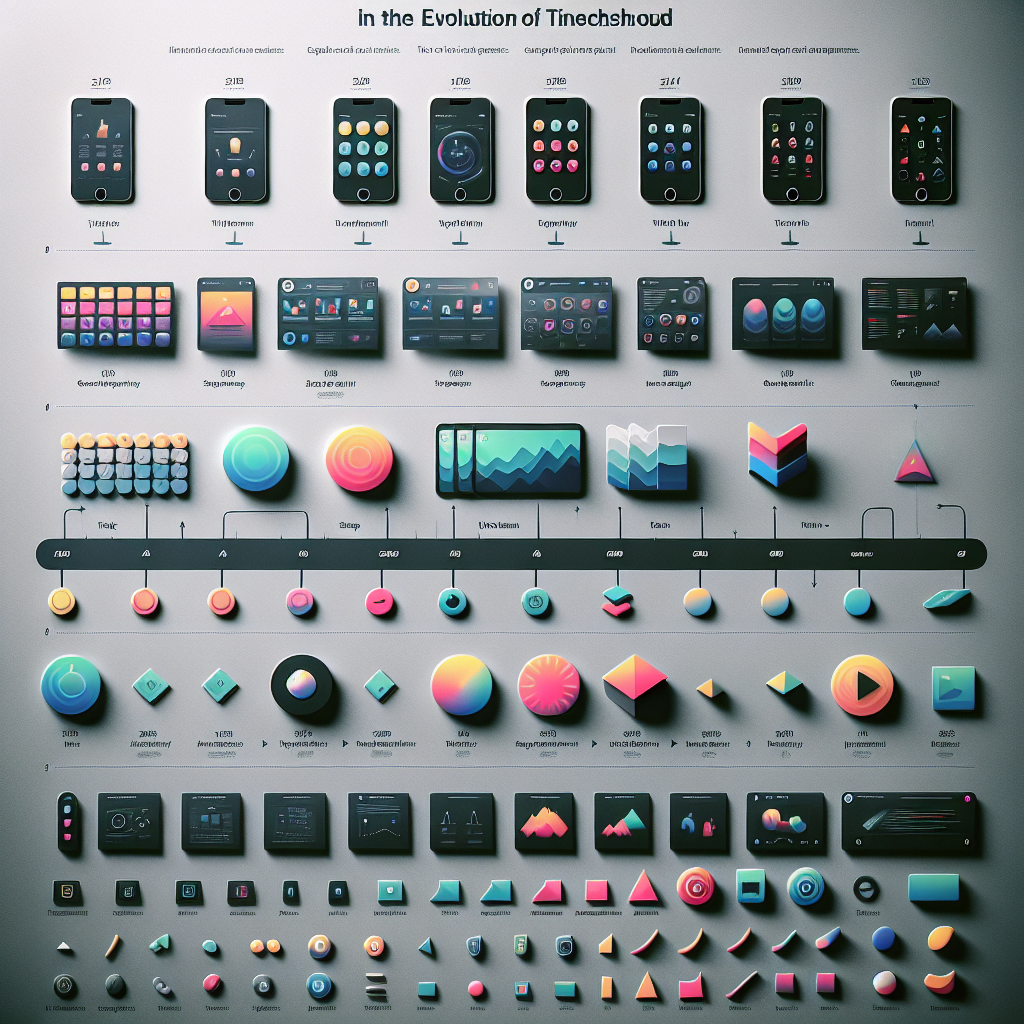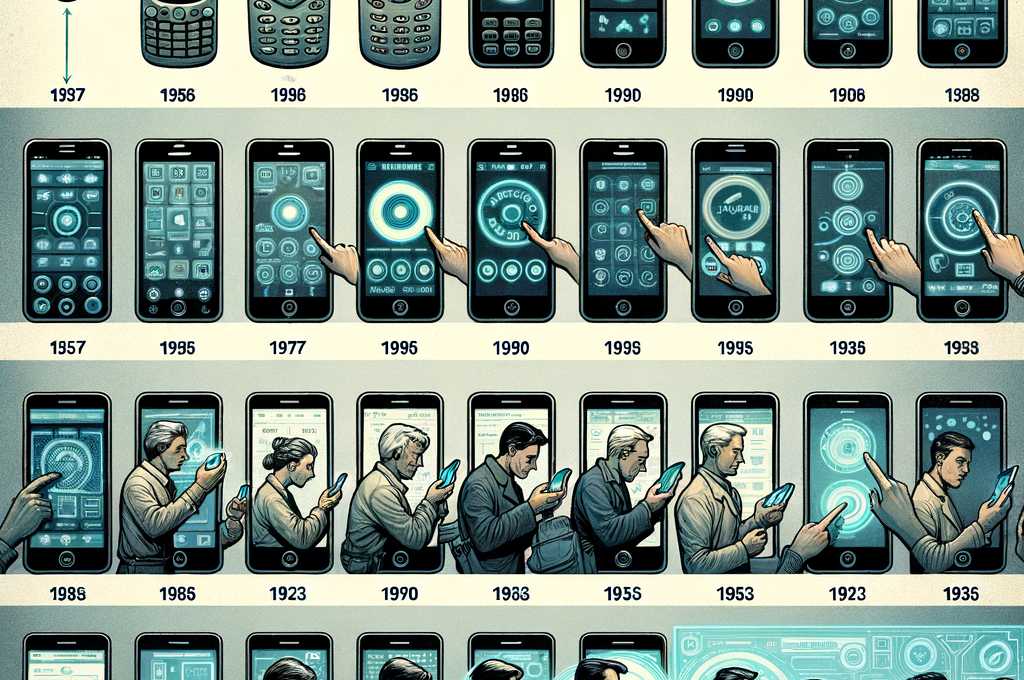
The advent of touchscreen technology has revolutionized the way we interact with devices. From the early resistive touchscreens to the advanced capacitive screens we use today, the journey of touchscreen interface design is a testament to human ingenuity and technological advancement. This article delves into the evolution of touchscreen controls, highlighting key innovations, case studies, and the future of this ever-evolving field.
The Early Days: Resistive Touchscreens
Resistive touchscreens were among the first to be widely adopted. These screens rely on pressure to register input, making them less sensitive but more durable. Early devices like PDAs and some of the first smartphones utilized resistive technology. Despite their limitations, resistive touchscreens laid the groundwork for future innovations.
The Shift to Capacitive Touchscreens
The introduction of capacitive touchscreens marked a significant leap forward. Unlike resistive screens, capacitive touchscreens use the electrical properties of the human body to detect input. This technology allows for multi-touch gestures, which have become a staple in modern interface design. The iPhone, released in 2007, was one of the first devices to popularize capacitive touchscreens, setting a new standard for user interaction.
Innovations in Touchscreen Interface Design
Multi-Touch Gestures
Multi-touch gestures have transformed the way we interact with devices. Pinch-to-zoom, swipe, and tap are now intuitive actions that users perform without a second thought. These gestures have made navigation more fluid and natural, enhancing the overall user experience.
Haptic Feedback
Haptic feedback adds a tactile dimension to touchscreen interactions. By providing physical sensations in response to touch, haptic feedback makes virtual buttons feel more real. This innovation has been particularly beneficial in gaming and virtual reality applications, where immersive experiences are crucial.
Adaptive Interfaces
Adaptive interfaces adjust based on user behavior and context. For example, a keyboard that changes layout based on the app being used or a screen that dims in low light conditions. These interfaces make devices more intuitive and user-friendly, reducing the learning curve for new users.
Case Studies: Real-World Applications
Apple’s iOS
Apple’s iOS is a prime example of effective touchscreen interface design. The operating system’s intuitive gestures, combined with haptic feedback, create a seamless user experience. Features like 3D Touch, which detects varying levels of pressure, further enhance interaction.
Microsoft Surface
The Microsoft Surface line of devices showcases the potential of adaptive interfaces. The Surface Pen and touch capabilities work in tandem to provide a versatile user experience. The device’s ability to switch between tablet and laptop modes is a testament to the flexibility of modern touchscreen technology.
Tesla’s Infotainment System
Tesla’s infotainment system is another excellent example. The large touchscreen interface controls everything from navigation to climate settings. The system’s responsiveness and intuitive design make it easy for drivers to interact with their vehicle, enhancing both safety and convenience.
Statistics: The Impact of Touchscreen Technology
- According to Statista, the global touchscreen market is expected to reach $93.8 billion by 2025.
- A study by Pew Research Center found that 81% of Americans own a smartphone, most of which use capacitive touchscreens.
- Research by Grand View Research indicates that the automotive touchscreen market is projected to grow at a CAGR of 8.4% from 2020 to 2027.
The Future of Touchscreen Interface Design
The future of touchscreen interface design is promising, with several exciting developments on the horizon. Flexible and foldable screens are becoming more prevalent, offering new possibilities for device form factors. Augmented reality (AR) and virtual reality (VR) are also set to benefit from advancements in touchscreen technology, providing more immersive experiences.
Moreover, the integration of artificial intelligence (AI) will enable even more adaptive and personalized interfaces. AI can analyze user behavior to predict actions and adjust the interface accordingly, making interactions more efficient and enjoyable.
Conclusion
The evolution of touchscreen interface design has been marked by significant innovations that have transformed the way we interact with technology. From the early resistive screens to the advanced capacitive touchscreens of today, each development has brought us closer to more intuitive and immersive experiences. As we look to the future, the potential for further advancements is limitless, promising even more exciting possibilities for user interaction.
Question and Answer Section
Q: What are the main differences between resistive and capacitive touchscreens?
A: Resistive touchscreens rely on pressure to register input, making them less sensitive but more durable. Capacitive touchscreens use the electrical properties of the human body to detect input, allowing for multi-touch gestures and more responsive interactions.
Q: How has haptic feedback improved touchscreen interactions?
A: Haptic feedback adds a tactile dimension to touchscreen interactions by providing physical sensations in response to touch. This makes virtual buttons feel more real and enhances immersive experiences, particularly in gaming and virtual reality applications.
Q: What are some examples of adaptive interfaces in touchscreen technology?
A: Adaptive interfaces adjust based on user behavior and context. Examples include keyboards that change layout based on the app being used and screens that dim in low light conditions. These interfaces make devices more intuitive and user-friendly.
Q: What is the future of touchscreen interface design?
A: The future of touchscreen interface design includes flexible and foldable screens, advancements in AR and VR, and the integration of AI for more adaptive and personalized interfaces. These developments promise even more intuitive and immersive user experiences.
“`

